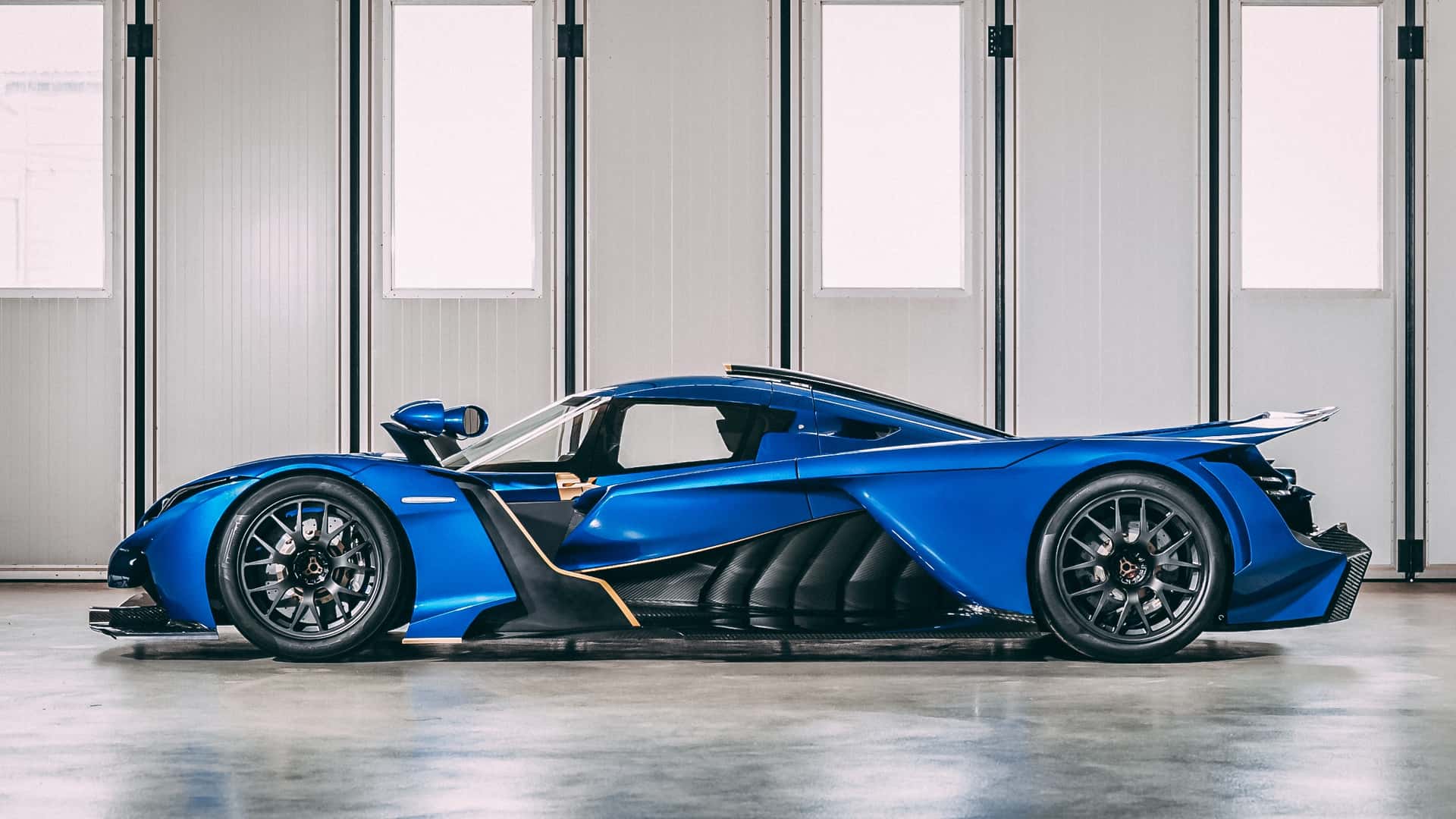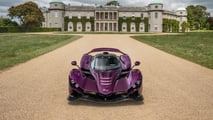
Since the dawn of the automobile, hustlers and bad actors have tried separating enthusiasts from their money by debuting flashy concepts, then soft-pedaling their release indefinitely. That trend has only accelerated in the last decade with the advancement of digital design tools, AI, and social media.
These days, all it takes to collect orders for a new hypercar is a set of convincing renders and an Instagram handle, with companies you’ve never heard of peddling GTA-looking cars that may never see a road not made of pixels.
That’s not Praga’s MO. The Czech company behind the 2,200-pound, 700-horsepower Bohema may not be well known, but with over a decade of racing and development under its belt, it’s adamant that its first production hypercar is as ready for prime time as anything from Ferrari, McLaren, or Lamborghini.

Speaking with Motor1 at the Goodwood Festival of Speed, both the company’s chief engineer and its head of marketing shared the Bohema’s development history and explained how it ended up being the first non-Nissan to use the GT-R’s lauded twin-turbo V-6.
From Tractors to Track Days
Though you probably haven’t heard of it, Praga has been around in one form or another since 1908. During the Czech socialist period lasting from the 1940s through 1989, it produced agricultural vehicles and light trucks along with gearboxes and other components under government orders. Since the early 2010s, though, its ambitions have focused squarely on the racetrack.
Jan Martinek, Praga’s Chief Engineer, joined the team in 2013 with the assignment of making the single-seat, carbon-tub R1 race car road-legal. The company saw a market niche in an ultra-light track day supercar, so Martinek built a prototype called R1R and started taking it to circuits across Europe. As he tells it, people loved the car’s 700-kilogram weight, but were skeptical of its cramped cabin, lack of air conditioning, and four-cylinder engine.
Praga made its first PR splash back in 2016, courtesy of Swedish skier Jon Olsson. The company was looking for investors, and Jon was a car enthusiast with money and a reputation for daily-driving sports cars in all conditions.
“I texted Jon like, ‘Hey, would you be willing to test drive the car for a little bit in Monaco?’” Martinek recalled. Olsson did him one better, asking to borrow the R1R to drive from Monaco to his home in Marbella, Spain—a distance of over 1,200 miles in a full-blown race car.
Olsson featured the car in his vlog, apparently enjoying it so much he asked to borrow it again—this time for an ice race in Northern Sweden, another 1,200 miles from home in minus-24-degree weather. The prototype’s ECU froze once in the cold and had to be warmed up, but apart from that hiccup, the R1R performed flawlessly.
Around that time, Praga came under new ownership again, and the company changed directions with its roadgoing concept. While the R1R had a “one-plus-one” seating configuration with a central driving position and a movable steering column to allow for a passenger, customer feedback dictated two full-size seats. Customers also demanded air conditioning and more creature comforts than the bare-bones race car.
Around that time, Aston Martin revealed the Valkyrie, beating Praga to the punch with a race car for the street. “That was the best thing that could have happened,” Martinek said. “Suddenly, you had Mr. JWW stepping into the seat and saying, ‘This is like an F1 [car].’ It normalized it.”
Building the Bohema
Praga spent the next eight years developing and testing the Bohema. It jumped through regulatory hoops and tackled engineering challenges, such as how to design windshield wipers for its wraparound front glass, or how to keep the cabin as narrow as possible for aerodynamics, while still giving driver and passenger plenty of elbow room. (The solution for the latter is a clever staggered seating arrangement that puts the driver’s elbow rest above and ahead of the passenger’s.)
But perhaps the most interesting engineering debate was what engine the Bohema should have.

Praga is the first company to license Nissan’s 3.8-liter VR38DETT V-6, the heart of the R35 GT-R. UK tuner Iain Litchfield then massages it to a stable 700 horsepower for use in the Bohema. But the decision to go with the V-6 didn’t come easily.
“When we built the R1R [road-]legal version, it was a four-cylinder turbo,” Martinek told Motor1. “And when we were considering production, I wanted to get rid of the turbo because of heat, plus better sound, and all. So I wanted [a] natural-powered V-6 because it would be the same power, same weight, but naturally-aspirated.”
Praga approached Nissan about supplying it with its VQ line of naturally-aspirated V-6s. Pretty quickly, the Japanese company agreed, but Martinek wasn’t finished.

I raised a question: ‘What if—just what if—we’re considering some special edition. What about the GT-R engine?'
“I raised a question: ‘What if—just what if—we’re considering some special edition. What about the GT-R engine?’” As Praga’s chief engineer recalls, the request was initially met with indignation: “‘No way, never. Crown jewel of Japan, we’ll never give this to anyone.’”
As Praga’s concept shifted from the R1R to a two-seat, million-plus-dollar hypercar, a naturally-aspirated VQ wouldn’t cut it. Praga went back to Nissan about the GT-R V-6 while approaching BMW, Mercedes, and Audi for engine options, too.
Designed Around a V-10
While the company awaited word from Nissan, Audi approved Praga’s request for the R8’s 5.2-liter V-10. “That’s when Nissan came back to us and said, ‘We had a board meeting and decided we could give you the engine.’ So we bought both of the engines,” Martinek said.
But as Praga debated the relative merits of the two engines, it still had a car to design. Unsure which way things would go, the company engineered the Bohema’s carbon structure to accommodate the larger V-10.

The car was designed around the V-10 because then we knew that we could fit the V-6 as well.
“We physically had both engines,” Martinek explained. “So the car was designed around the V-10 because then we knew that we could fit the V-6 as well.”
We know which direction Praga went—but why forego naturally-aspirated V-10 screams in a hardcore, lightweight car?
“Eventually, it was emissions reasons, it was the support we could get from Iain [Litchfield], but it was also the support we could get from the [OEM] factories.” Martinek also cited tunability as a key factor. “Yes, V-10 sounds better on paper, [and] in sound,” he acknowledged. “But it’s 600 brake horsepower and that’s it. This [V-6] is a bulletproof engine and the power—sky’s the limit.”


When you see it, you almost expect [a] screaming V-10. It gives the car its own unique personality.
I asked Praga Sales & Marketing Director Mark Harrison whether customers were put off by “only” having a GT-R engine in their $1.5-million hypercar. To the contrary, he said it hasn’t been an issue.
“Everyone I spoke to in the US, when they said ‘What’s the engine?’ And I told them, they said, ‘Great. I’ve got a GT-R as my daily. It’s bombproof, it’s reliable, it’s one less thing to worry about.’” Also, he added, “it is exotic, because Nissan has never let anyone else take that engine.”
Martinek admits that the turbocharged heart is a little unexpected given the Bohema’s radical looks—but that’s not necessarily a bad thing. “When you see it, you almost expect [a] screaming V-10,” he told Motor1. “It gives the car its own unique personality.”












